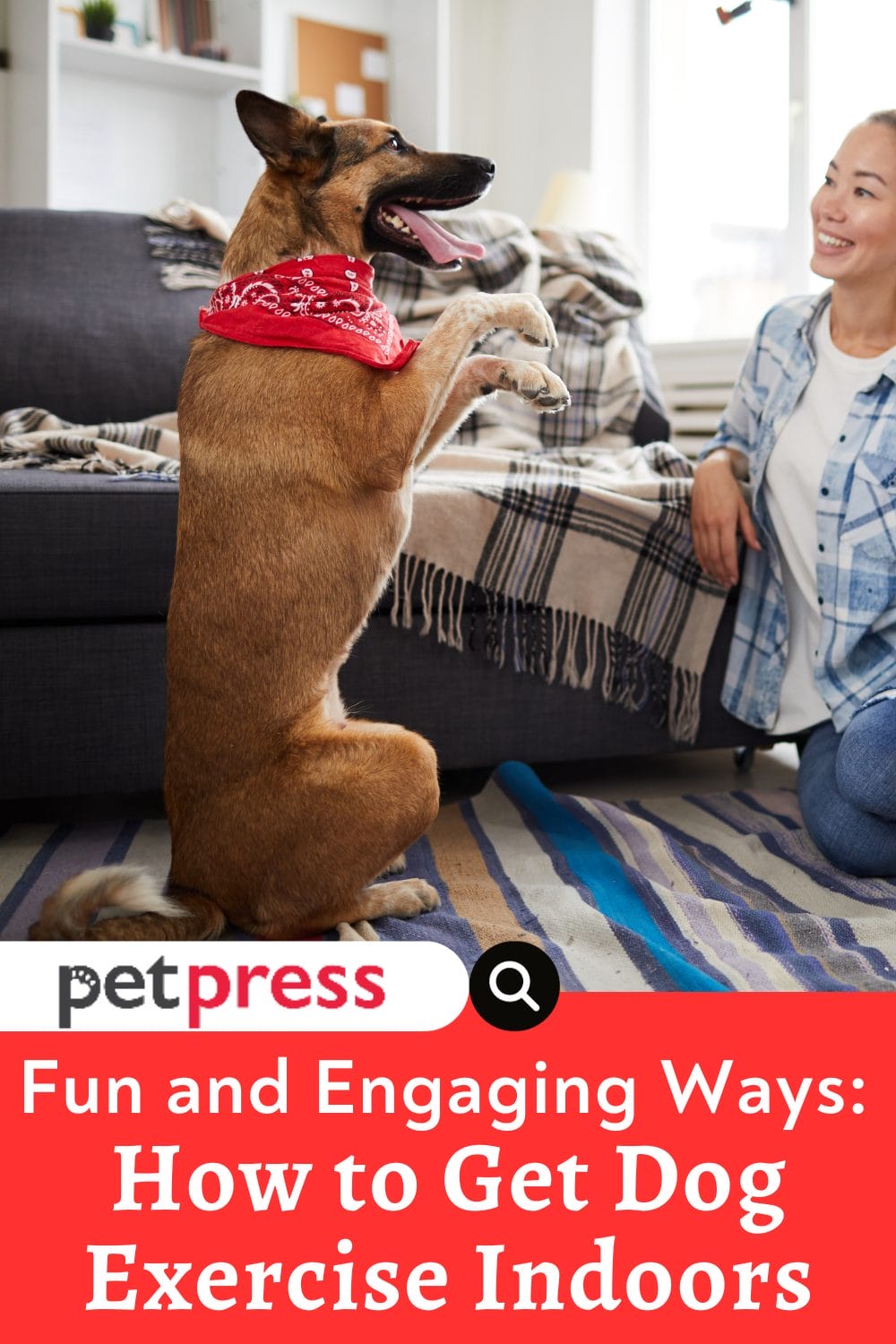
Is your beloved furry friend missing out on exercise due to inclement weather? Don’t worry, we’ve got you covered! In this article, we’ll explore creative ways on how to get dog exercise indoors.
Discover a plethora of exciting and entertaining indoor activities that will keep your dog active, happy, and healthy. From interactive toys and puzzle games to indoor agility training and hide-and-seek fun, there’s something for every pup.
Let’s dive in and find out how to make indoor exercise a blast for your canine companion.
The Importance of Dog Exercise
As pet owners, we understand the significance of regular exercise for our furry friends. However, sometimes external factors like inclement weather pose challenges to outdoor activities. This is where indoor exercise becomes crucial for our dogs’ overall well-being.
1. Physical Health Benefits
Indoor exercise ensures that dogs maintain a healthy weight and proper muscle tone. Lack of physical activity can lead to weight gain, which in turn increases the risk of various health issues such as obesity, heart disease, and joint problems.
2. Mental Stimulation
Engaging in indoor activities prevents boredom and helps alleviate destructive behaviors that may arise from pent-up energy. Mental stimulation through exercise keeps their minds sharp and encourages problem-solving abilities, ultimately leading to a happier and more contented dog.
3. Bonding and Socialization
Indoor exercise provides an opportunity for meaningful interaction between dogs and their owners. Incorporating socialization into indoor exercise, such as playdates with other dogs or training classes, helps dogs develop proper social skills and improves their overall behavior.
4. Weather Adaptability
Living in regions with extreme weather conditions can limit outdoor exercise possibilities. Indoor exercise ensures that dogs maintain their activity levels regardless of the weather. Whether it’s scorching heat, heavy rain, or freezing cold, having indoor exercise options readily available allows dogs to stay active and healthy throughout the year.
5. Energy Outlet and Behavior Management
Regular indoor exercise provides an outlet for dogs to release their excess energy. As a result, they are less likely to display destructive behaviors, such as excessive barking, chewing, or digging.
By engaging in activities indoors, dogs have a healthy and constructive way to channel their energy, promoting a calmer and more well-behaved demeanor.

Understanding Your Dog’s Exercise Needs
Regular exercise is vital for your dog’s overall well-being. The amount of exercise required depends on various factors, such as breed, age, and size. Certain breeds need more physical activity than others. Puppies, for instance, have endless energy and require frequent play sessions to burn off their excess energy.
Insufficient exercise can lead to a range of health issues, including obesity, joint problems, and behavioral problems. It’s essential to provide your dog with adequate exercise to keep them healthy, both physically and mentally.
How To Get Dog Exercise Indoors: 4 fun and engaging activities
Keeping our canine companions active and entertained indoors is essential for their overall well-being. Here are some engaging activities on how to get dog exercise indoors and provide mental stimulation and physical exercise for your dog.
Interactive Toys and Mental Stimulation
Interactive toys are a fantastic way to keep your dog engaged and mentally stimulated indoors. These toys are designed to challenge your dog’s problem-solving skills while providing physical activity at the same time.
Consider toys like Kong toys, treat-dispensing balls, or puzzle boards that require your dog to work for their treats. They will have a great time figuring out how to access the goodies, keeping their minds sharp and their bodies active.
DIY Agility Training at Home
You don’t need a fancy agility course to engage your dog in agility training. With a bit of creativity and some household items, you can set up a DIY agility course right in your living room. Use blankets as makeshift tunnels, broomsticks as jumps, and cushions as hurdles.
Guide your dog through the course, rewarding their progress and encouraging them with treats and praise. This activity not only provides physical exercise but also improves your dog’s coordination, balance, and confidence.
The Thrill of Hide-and-Seek Games
Dogs have a natural instinct to search and hunt. Tap into this instinct by playing hide-and-seek games with them indoors. Have someone hold your dog while you find a hiding spot, then call them to search and find you. Reward their successful search with treats and praise.
This game not only provides mental stimulation but also gets your dog moving and burning off energy. It strengthens the bond between you and your dog while satisfying their natural instincts.
Creating an Indoor Obstacle Course
Transform your home into an exciting adventure zone by creating an indoor obstacle course for your dog. Use pillows, cushions, sturdy boxes, and other household items to set up a course that challenges your dog’s agility and problem-solving abilities.
Guide them through the course, encouraging and rewarding their progress. Start with simple obstacles and gradually increase the difficulty level as your dog becomes more skilled. This activity provides both mental and physical exercise, keeping your dog engaged and entertained.
Remember to tailor the activities to your dog’s abilities, always supervise them, and ensure their safety throughout. With a little creativity, you can keep your dog happy, active, and stimulated, even when indoor playtime is required.
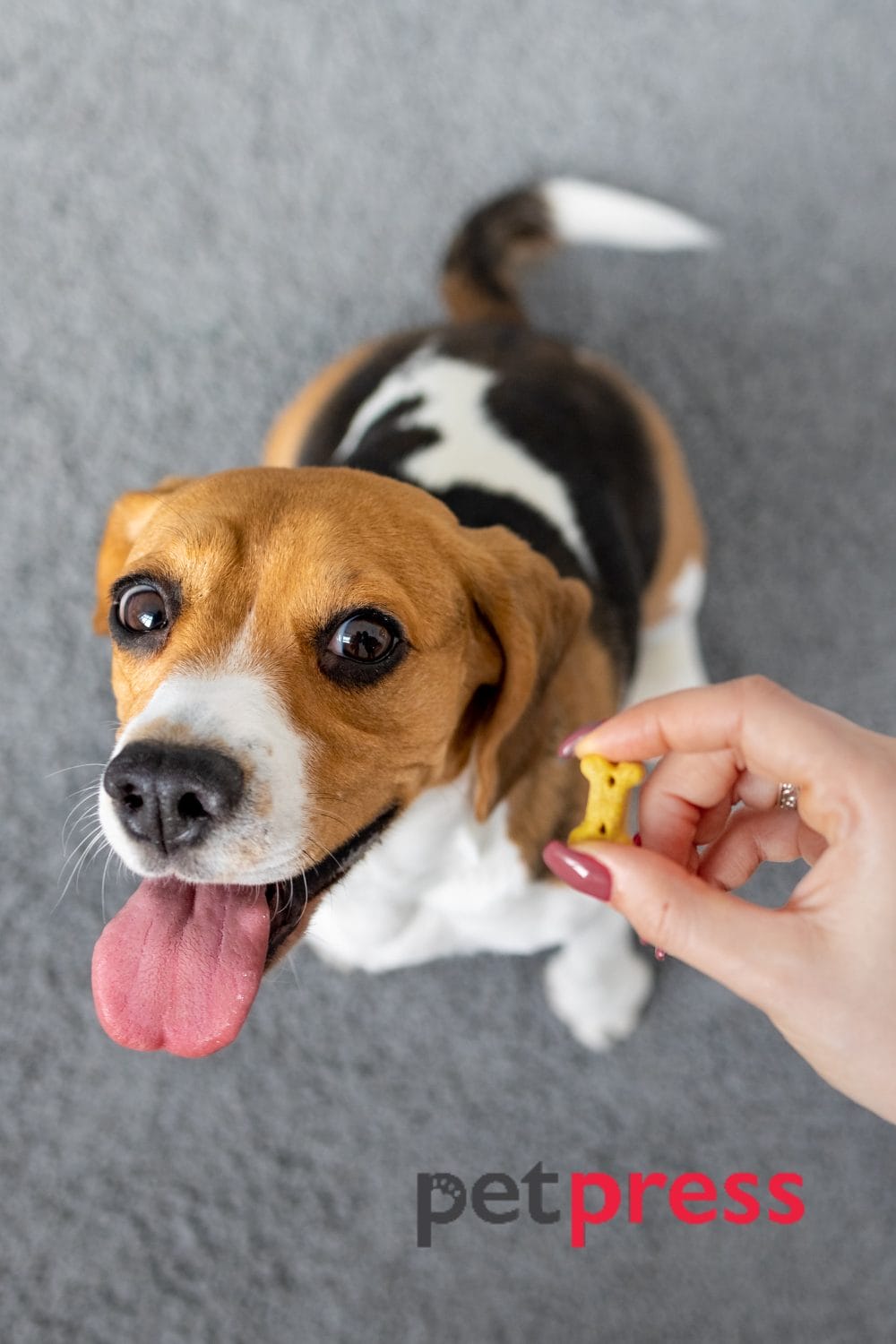
Treadmill Training for Dogs: Making the most of your treadmill for your dog’s exercise needs
Treadmill training can be an excellent solution for providing controlled exercise for your dog, especially during inclement weather or if you don’t have access to a large outdoor space. It offers several benefits and considerations that can help keep your dog active and healthy.
Benefits of Treadmill Training for Dogs
Treadmill training offers a range of benefits for dogs, including:
- Controlled Exercise: Treadmills allow you to control the speed and intensity of your dog’s exercise. This is particularly useful for dogs with specific exercise needs or those recovering from an injury.
- Weather Adaptability: Regardless of the weather conditions outside, you can provide your dog with exercise indoors. Whether it’s sweltering heat, pouring rain, or freezing cold, a treadmill ensures consistent exercise for your furry friend.
- Physical Fitness: Regular treadmill exercise helps maintain cardiovascular fitness and muscle tone, preventing obesity and associated health issues.
- Mental Stimulation: Treadmill training engages your dog’s mind as they learn to stay focused and maintain balance while walking or jogging on the moving surface.
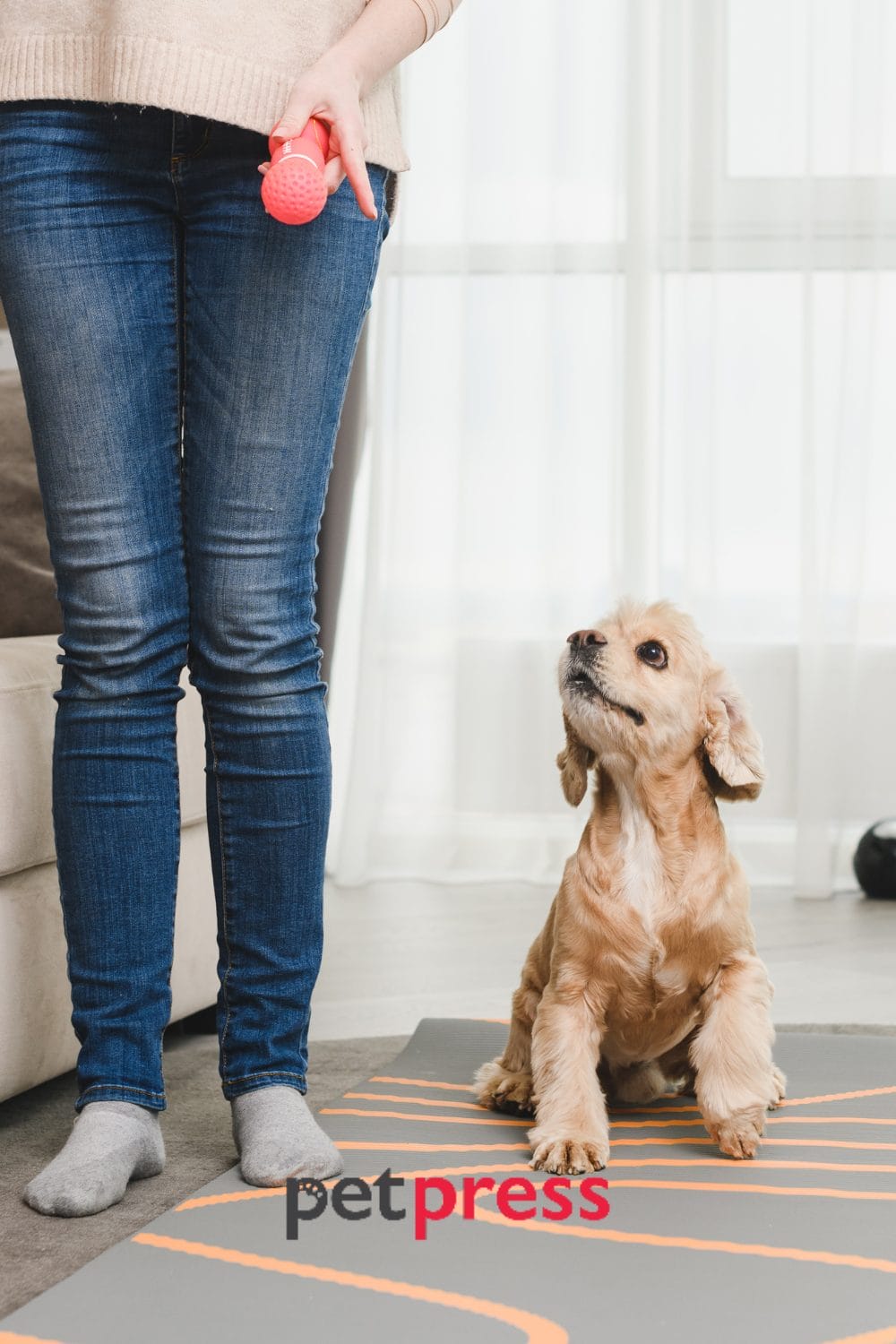
Steps to Introduce Your Dog to the Treadmill
It’s important to introduce your dog to the treadmill gradually and ensure they are comfortable with the process. Here’s a step-by-step guide:
- Familiarization: Allow your dog to get accustomed to the presence of the treadmill. Turn it on without your dog on it and reward them with treats and praise to create positive associations.
- Desensitization: Once your dog is comfortable around the treadmill, encourage them to approach it and explore. Reward and praise them for showing curiosity and being near the treadmill.
- Introduction to Movement: Start with the treadmill set at a slow speed. Use treats or toys to entice your dog to step onto the treadmill. Gradually increase the speed as your dog becomes more comfortable. Always supervise their movements and offer rewards for positive behavior.
Importance of Monitoring and Gradual Progression
While treadmill training can be beneficial, it’s essential to monitor your dog’s progress and ensure their safety. Here are some considerations:
- Supervision: Always supervise your dog during treadmill sessions to prevent accidents or injuries. Stay close by and be ready to pause or stop the treadmill if needed.
- Gradual Progression: Start with short, low-intensity sessions, gradually increasing the duration and intensity over time. Allow your dog to build endurance and adjust to treadmill exercise at their own pace.
- Positive Reinforcement: Use treats, verbal praise, and rewards to motivate and reward your dog for their efforts during treadmill training. This helps create a positive association with the activity.
Remember, treadmill training should always be a positive experience for your dog. If your dog shows signs of discomfort or stress, consult with a professional trainer or veterinarian for guidance.
By incorporating treadmill training into your dog’s exercise routine, you can provide controlled exercise regardless of weather conditions and give them a mental and physical workout. With proper monitoring, gradual progression, and positive reinforcement, your dog can benefit from this indoor exercise option.
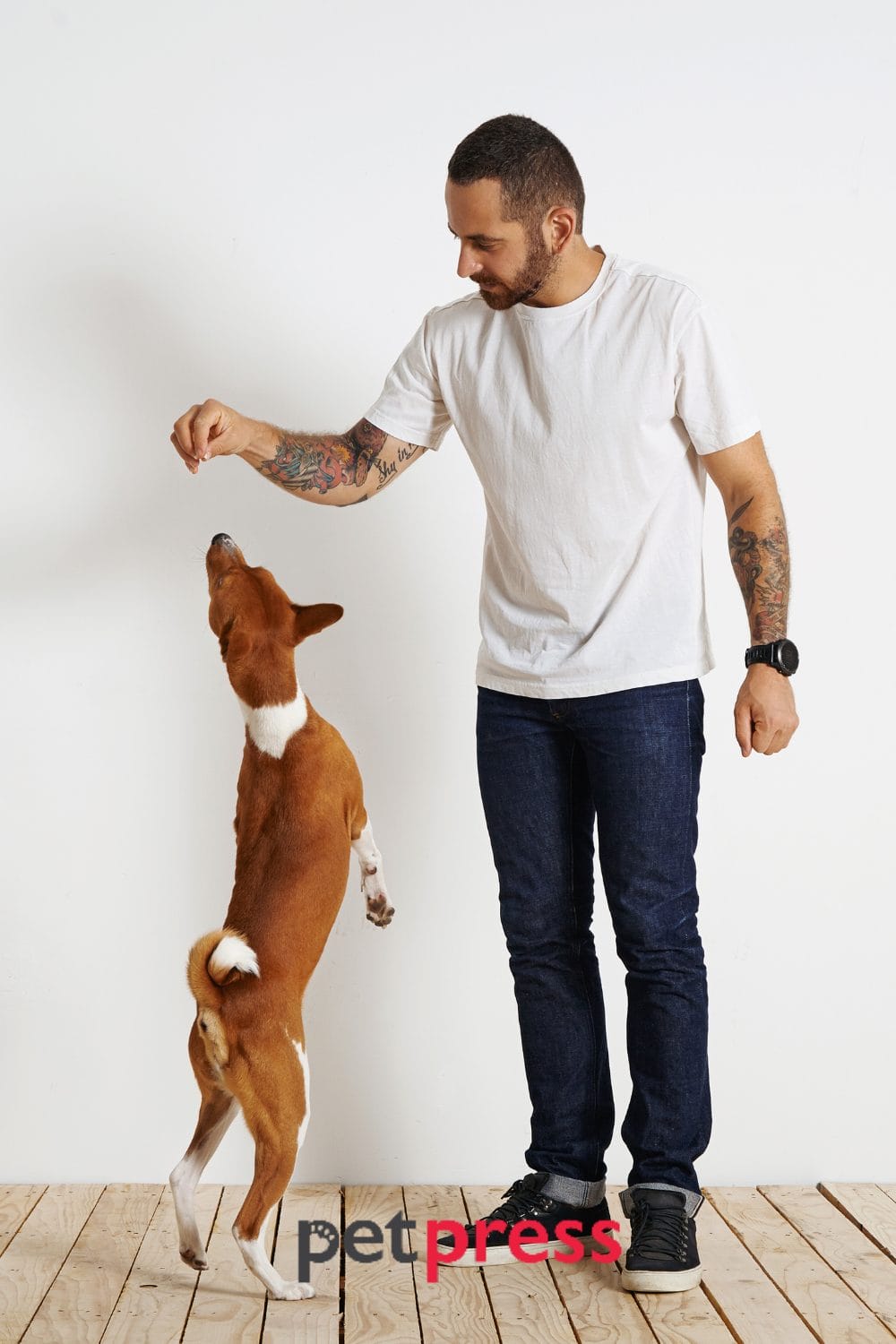
Safety Tips for Indoor Dog Exercise
When it comes to indoor dog exercise, ensuring the safety of your furry friend is of utmost importance. Here are some valuable safety tips to keep in mind to make your indoor exercise sessions enjoyable and risk-free for your dog.
1. Clear the Space
Before starting any indoor exercise activity, clear the area of any potential hazards or fragile items that your dog could knock over or break. Make sure there are no sharp objects, electrical cords, or poisonous substances within your dog’s reach.
2. Adequate Warm-Up and Cool-Down
Similar to humans, dogs also benefit from a warm-up and cool-down routine before and after exercise sessions. A brief walk or some gentle stretching can help prepare your dog’s muscles for activity and prevent injuries. Cooling down with a calm walk or gentle stretching can help prevent post-exercise soreness.
3. Use Non-Slip Surfaces
Ensure that the space where your dog exercises has a non-slip surface. Many dogs can struggle with traction on hardwood or tile floors, which can lead to slips and injuries. Consider using exercise mats or rugs to provide a secure and non-slip surface for your dog.
4. Monitor Your Dog’s Health
Always be attentive to your dog’s well-being during exercise. Watch for signs of fatigue, such as excessive panting, lagging behind, or avoiding activity. If your dog appears overly tired or is experiencing breathing difficulties, it’s important to stop the exercise and allow them to rest.
5. Gradual Progression
When introducing your dog to a new exercise routine or activity, remember to start slowly and gradually increase the intensity and duration over time. Sudden intense exercise can put stress on your dog’s muscles and joints, leading to strains or injuries. Give your dog time to adapt and build endurance at a comfortable pace.
6. Hydration is Key
Keep fresh water available for your dog during exercise sessions to ensure they stay hydrated. Exercising indoors can still lead to increased thirst, so make sure your dog has access to water throughout the activity.
7. Supervision is Essential
Never leave your dog unattended during indoor exercise sessions. Supervision allows you to promptly address any potential issues or injuries that may arise. It also ensures the safety of your dog and prevents them from engaging in harmful behaviors or accessing hazardous areas.
Remember, your dog’s well-being should always be the top priority during any physical activity. With proper safety measures in place, you can maintain a healthy and enjoyable exercise routine for your dog, no matter the weather conditions outside.
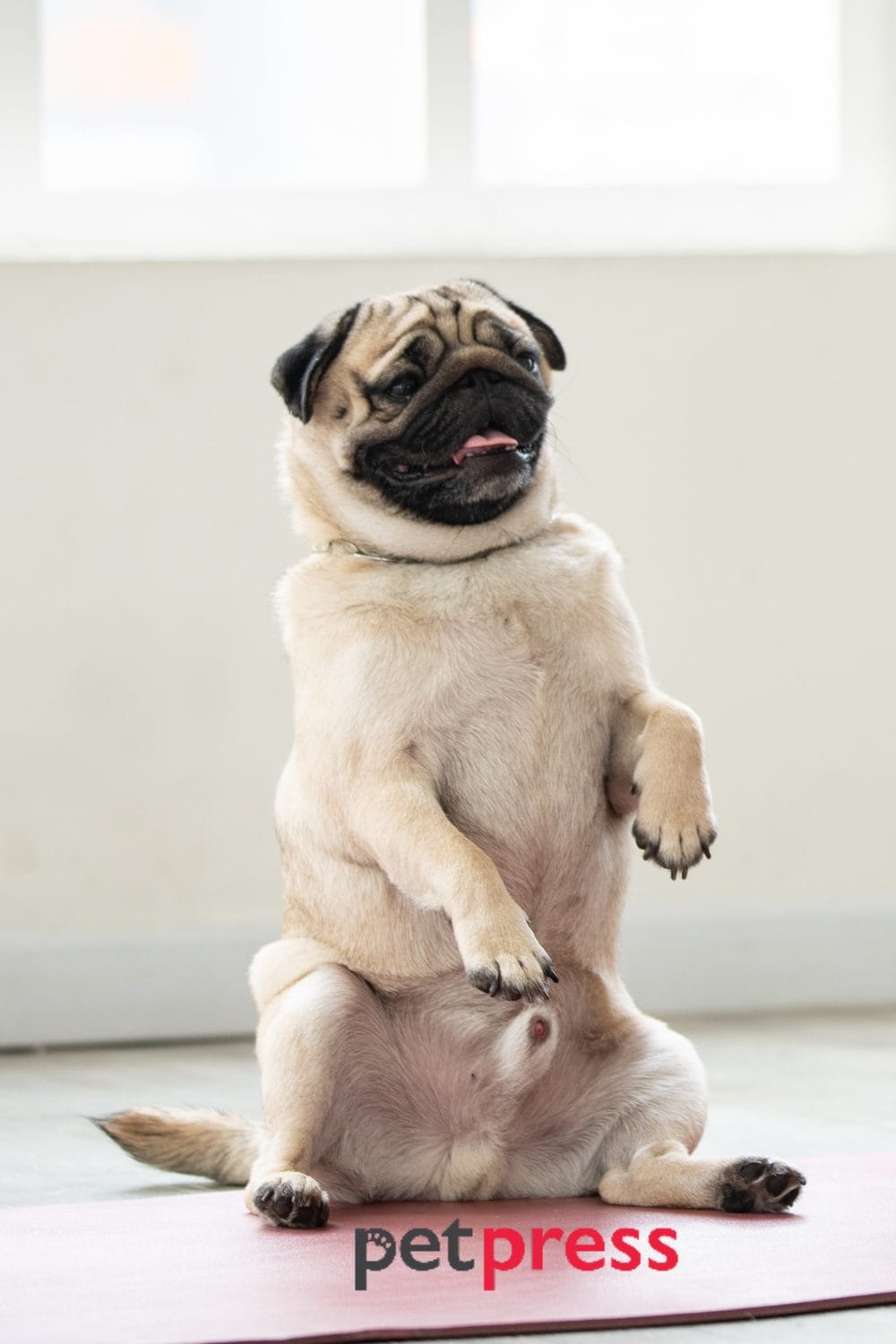
Conclusion: Keeping Your Dog Active and Happy Indoors
In conclusion, indoor exercise for dogs is not only a great way to keep them active but also provides mental stimulation and strengthens the bond between you and your furry friend. Engaging in indoor activities offers a variety of ways to keep your dog entertained and physically fit.
Remember to adapt the activities to suit your dog’s specific needs, including breed, age, and physical abilities. Every dog is unique, so it’s important to find the activities that your furry friend enjoys and feels comfortable with.
So, the next time you’re faced with bad weather or limited outdoor options, don’t worry—turn your attention to these engaging ways on how to get dog exercise indoors.
Get creative, have fun, and create a fulfilling exercise routine that will keep your dog active, happy, and healthy all year. Your four-legged companion will thank you for it with wagging tails, boundless energy, and an even stronger bond.
FAQs: How to Get Dog Exercise Indoors
Absolutely! Indoor exercise is a great way to keep your dog active and entertained during inclement weather. Engage in activities like interactive toys, indoor agility training, or hide-and-seek games to keep them moving and mentally stimulated.
Ensuring a safe environment is essential. Clear the space of hazards, provide non-slip surfaces, and supervise your dog during exercise. Start slowly and gradually increase the intensity to prevent strains or injuries.
Interactive toys, puzzle games, and training sessions are excellent ways to keep your dog mentally engaged indoors. These activities challenge their problem-solving skills and provide mental stimulation.
Absolutely! Use household items like cushions, blankets, and broomsticks to design a DIY agility course. It improves your dog’s coordination, builds confidence, and provides a fun and challenging exercise option.
If your dog seems uninterested, try different activities to find what they enjoy most. Experiment with different toys, games, or training exercises. Patience and persistence will help you discover engaging indoor activities that resonate with your dog’s interests and preferences

Dive deeper into the world of indoor dog exercise. Explore more articles for exciting ideas and expert tips!
DIY Dog Exercise Equipment: Boost Your Pet’s Fitness at Home!
5 Low Exercise Dogs: The Perfect Companion for a Calm Lifestyle
Mental Exercises For Dogs: Keep Your Dog Engaged
- Can Pets Sense Pregnancy in Humans? - October 1, 2024
- 6 Unusual Pets for Adventurous Owners: From Tarantulas to Pigs - September 30, 2024
- Feline Hyperthyroidism: Early Signs and Modern Treatments - September 30, 2024


GIPHY App Key not set. Please check settings